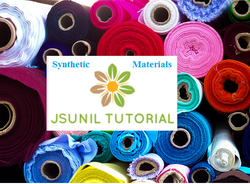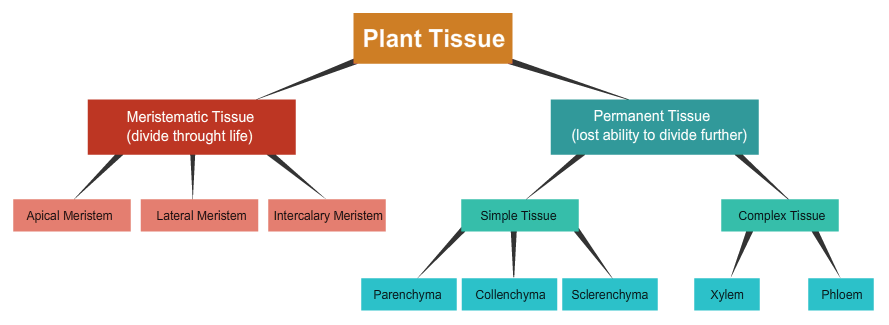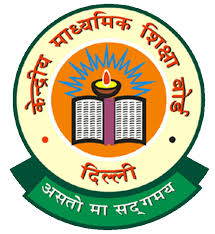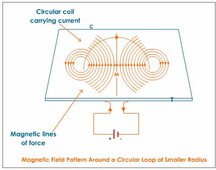1. The current passing through a room heater has been halved. What will happen to the heat produced by it?
2. An electric iron of resistance 20 ohm draws a current of 5 amperes. Calculate the heat produced in 30 seconds.
3. An electric heater of resistance 8 ohm takes a current of 15 A from the mains supply line. Calculate the rate at which heat is developed in the heater.
4. A resistance of 40 ohms and one of 60 ohms are arranged in series across 220 volt supply. Find the heat in joules produced by this combination in half a minute.
5. A resistance of 25 ohm is connected to a 12 V battery. Calculate the heat energy in joules generated per minute.
6. 100 joules of heat is produced per second in a 4 ohm resistor. What is the potential difference across the resistor?
7. An electric iron is connected to the mains power supply of 220 V. When the electric iron is adjusted at minimum heating’ it consumes a power of 360 W but at ‘maximum heating’ it takes a power of 840 W. Calculate the current and resistance in each case.
8. Ten bulbs are connected in a series circuit to a power supply line. Ten identical bulbs are connected in a parallel circuit to an identical power supply line.
1. Which circuit would have the highest voltage across each bulb
2. In which circuit would the bulbs be brighter?
3. In which circuit, if one bulb blows out, all others will stop glowing?
4. Which circuit would have less current in it?
9. Calculate the cost of operating a heater of 500 W for 20 hours at the rate of Rs. 3.90 per unit.
10. Which has a greater resistance, a 100 watt bulb or a 60 watt bulb?
11. How much energy is consumed when a current of 5 amperes flows through the filament (or element) of a heater having resistance of 100 ohms for two hours? Express it in joules.
1. A current of 1 ampere passed through a resistance of 300 ohms
2. A current of 2 amperes passed through a resistance of 100 ohms.
15. Electric kettle rated at 220 V, 2.2 kW, works for 3 hours. Find he energy consumed and the current drawn. W
16. In a house two 60 W electric bulbs are lighted for 4 hours, and three 100 W bulbs for 5 hours everyday. Calculate the electric energy consumed in 30 days.
17. If the potential difference between the ends of a wire of fixed resistance is doubled, by how much does the electric power increase?
18. A bulb is rated as 250 V; 0.4 A. Find its : (i) power, and (ii) resistance.
19. For a heater rated at 4 kW and 220 V, calculate (a) the current, b) the resistance of the heater, ) the energy consumed in 2 hours, and d) the cost if 1 kWh is priced at Rs. 4.60.
20. An electric motor takes 5 amperes current from a 220 volt supply line. Calculate the power of the motor arid electrical energy consumed by it in 2 hours.
21. Which uses more energy: a 250 W TV set in 1 hour or a 1200 W Toaster in 10 minutes?
22. An electric bulb is rated as 10 W, 220 V. How many of these bulbs can be connected in parallel across the two wires of 220 V supply line if the maximum current which can be drawn is 5 A.
23. How much work is done in moving a charge of 2 coulombs from a point at 118 volts to a point at 128 volts?
24. What possible values of resultant resistance one can get by combining two resistances, one of value 2 ohm and the other 6 ohm?
25. If 3 resistances of 3 ohm each are connected in parallel, what will be their total resistance?
26. If five resistances, each of value 0.2 ohm, are connected in series, what will be the resultant resistance?
27. Four resistances of 16 ohms each are connected in parallel. Four such combinations are connected in series. What is the total resistance?
28. An electric bulb of resistance 20 and a resistance wire of 4 are connected in series with a 6 V battery. Draw the circuit diagram and calculate (i)the total resistance of the circuit.(ii) Current through the circuit. (iii)Potential difference across the electric bulb.(iv)Potential difference across the resistance wire.
29. How will you connect three resistors of 2 ohm, 3 ohm and 5 ohm respectively so as to obtain a resultant resistance of 2.5 ohm? Draw the diagram to show the arrangement.
30. How will you connect three resistors of resistances 2ohm, 3 ohm and 6 ohm to obtain a total resistance of: (a) 4 ohm, and (b) 1 ohm?
31. A wire of resistance R is cut into five equal pieces. These five pieces of wire are then connected in parallel. If the resultant resistance of this combination be R then the ratio of resultant to the original will be?
32. A copper wire has a diameter of 0.5 mm and resistivity of 1.6 x 10 m.
1. What will be the length of this wire to make its resistance 10 2ohm?
2. How much does the resistance change if the diameter is doubled?
33. An electric heater which is connected to a 220 V supply line has two resistance coils A and B of 24 resistances each. These coils can be used separately (one at a time), in series or in parallel. Calculate the current drawn when
1. Only one coil A is used.
2. Coils A and B are used in series.
3. Coils A and B are used in parallel.
34. If the length of a wire is doubled by taking more of wire, what happens to its resistance?
35. How does the resistance of a wire change when
1. Its length is tripled?
2. Its diameter is tripled?
3. Its material is changed to one whose resistivity is three times?
36. How much energy is given to each coulomb of charge passing through a 6 V battery?
37. The potential difference between the terminals of an electric iron is 240 V and the current is 5.0 A. What is the resistance of the electric iron?
38. A potential difference of 20 volts is applied across the ends of a resistance of 5 ohms. What current will flow in the resistance?
39. A resistance of 20 ohms has a current of 2 amperes flowing in it. What potential difference is there between its ends?
40. A current of 5 amperes flows through a wire whose ends are at a potential difference of 3 volts. Calculate the resistance of the wire.
41. The resistance of an electric lamp filament is 230 ohms. The lamp is switched on when the line voltage is 115 volts. What is the current in the lamp circuit?
42. What is the potential difference between the ends of a conductor of 16 ohm resistance, when a current of 1.5 A flows through it?
43. Calculate the work done in moving a charge of 4 coulombs from a point at 220 volts to another point at 230 volts.
44. What is the potential difference between the terminals of a battery if 250 joules of work is required to transfer 20 coulombs of charge from one terminal of the battery to the other?
45. How much work is done in moving a charge of 2 C across two points having a potential difference of 12 V?
46. An electric bulb draws a current of 0.25 A for 20 minutes. Calculate the amount of electric charge that flows through the circuit.
47. A radio set draws a current of 0.36 A for 15 minutes. Calculate the amount of electric charge that flows through the circuit.
48. Potential difference between two points of a wire carrying 2 ampere current is 0.1 volt. Calculate the resistance between these points.
49. A simple electric circuit has a 24 V battery and a resistor of 60 ohms. What will be the current in the circuit? The resistance of the connecting wires is negligible.
50. A wire of resistance R is cut into five equal pieces. These five pieces of wire are then connected in parallel. If the resultant resistance of this combination be R then the ratio of resultant to the original will be?
2. An electric iron of resistance 20 ohm draws a current of 5 amperes. Calculate the heat produced in 30 seconds.
3. An electric heater of resistance 8 ohm takes a current of 15 A from the mains supply line. Calculate the rate at which heat is developed in the heater.
4. A resistance of 40 ohms and one of 60 ohms are arranged in series across 220 volt supply. Find the heat in joules produced by this combination in half a minute.
5. A resistance of 25 ohm is connected to a 12 V battery. Calculate the heat energy in joules generated per minute.
6. 100 joules of heat is produced per second in a 4 ohm resistor. What is the potential difference across the resistor?
7. An electric iron is connected to the mains power supply of 220 V. When the electric iron is adjusted at minimum heating’ it consumes a power of 360 W but at ‘maximum heating’ it takes a power of 840 W. Calculate the current and resistance in each case.
8. Ten bulbs are connected in a series circuit to a power supply line. Ten identical bulbs are connected in a parallel circuit to an identical power supply line.
1. Which circuit would have the highest voltage across each bulb
2. In which circuit would the bulbs be brighter?
3. In which circuit, if one bulb blows out, all others will stop glowing?
4. Which circuit would have less current in it?
9. Calculate the cost of operating a heater of 500 W for 20 hours at the rate of Rs. 3.90 per unit.
10. Which has a greater resistance, a 100 watt bulb or a 60 watt bulb?
11. How much energy is consumed when a current of 5 amperes flows through the filament (or element) of a heater having resistance of 100 ohms for two hours? Express it in joules.
12. An electric bulb is rated at 220 V, 100 W. What is its resistance?
13. An electric bulb is connected to a 220 V power supply line. If the bulb draws a current of 0.5 A, calculate the power of the bulb.
14. In which of the following cases more electrical energy is consumed per hour?
13. An electric bulb is connected to a 220 V power supply line. If the bulb draws a current of 0.5 A, calculate the power of the bulb.
14. In which of the following cases more electrical energy is consumed per hour?
1. A current of 1 ampere passed through a resistance of 300 ohms
2. A current of 2 amperes passed through a resistance of 100 ohms.
15. Electric kettle rated at 220 V, 2.2 kW, works for 3 hours. Find he energy consumed and the current drawn. W
16. In a house two 60 W electric bulbs are lighted for 4 hours, and three 100 W bulbs for 5 hours everyday. Calculate the electric energy consumed in 30 days.
17. If the potential difference between the ends of a wire of fixed resistance is doubled, by how much does the electric power increase?
18. A bulb is rated as 250 V; 0.4 A. Find its : (i) power, and (ii) resistance.
19. For a heater rated at 4 kW and 220 V, calculate (a) the current, b) the resistance of the heater, ) the energy consumed in 2 hours, and d) the cost if 1 kWh is priced at Rs. 4.60.
20. An electric motor takes 5 amperes current from a 220 volt supply line. Calculate the power of the motor arid electrical energy consumed by it in 2 hours.
21. Which uses more energy: a 250 W TV set in 1 hour or a 1200 W Toaster in 10 minutes?
22. An electric bulb is rated as 10 W, 220 V. How many of these bulbs can be connected in parallel across the two wires of 220 V supply line if the maximum current which can be drawn is 5 A.
23. How much work is done in moving a charge of 2 coulombs from a point at 118 volts to a point at 128 volts?
24. What possible values of resultant resistance one can get by combining two resistances, one of value 2 ohm and the other 6 ohm?
25. If 3 resistances of 3 ohm each are connected in parallel, what will be their total resistance?
26. If five resistances, each of value 0.2 ohm, are connected in series, what will be the resultant resistance?
27. Four resistances of 16 ohms each are connected in parallel. Four such combinations are connected in series. What is the total resistance?
28. An electric bulb of resistance 20 and a resistance wire of 4 are connected in series with a 6 V battery. Draw the circuit diagram and calculate (i)the total resistance of the circuit.(ii) Current through the circuit. (iii)Potential difference across the electric bulb.(iv)Potential difference across the resistance wire.
29. How will you connect three resistors of 2 ohm, 3 ohm and 5 ohm respectively so as to obtain a resultant resistance of 2.5 ohm? Draw the diagram to show the arrangement.
30. How will you connect three resistors of resistances 2ohm, 3 ohm and 6 ohm to obtain a total resistance of: (a) 4 ohm, and (b) 1 ohm?
31. A wire of resistance R is cut into five equal pieces. These five pieces of wire are then connected in parallel. If the resultant resistance of this combination be R then the ratio of resultant to the original will be?
32. A copper wire has a diameter of 0.5 mm and resistivity of 1.6 x 10 m.
1. What will be the length of this wire to make its resistance 10 2ohm?
2. How much does the resistance change if the diameter is doubled?
33. An electric heater which is connected to a 220 V supply line has two resistance coils A and B of 24 resistances each. These coils can be used separately (one at a time), in series or in parallel. Calculate the current drawn when
1. Only one coil A is used.
2. Coils A and B are used in series.
3. Coils A and B are used in parallel.
34. If the length of a wire is doubled by taking more of wire, what happens to its resistance?
35. How does the resistance of a wire change when
1. Its length is tripled?
2. Its diameter is tripled?
3. Its material is changed to one whose resistivity is three times?
36. How much energy is given to each coulomb of charge passing through a 6 V battery?
37. The potential difference between the terminals of an electric iron is 240 V and the current is 5.0 A. What is the resistance of the electric iron?
38. A potential difference of 20 volts is applied across the ends of a resistance of 5 ohms. What current will flow in the resistance?
39. A resistance of 20 ohms has a current of 2 amperes flowing in it. What potential difference is there between its ends?
40. A current of 5 amperes flows through a wire whose ends are at a potential difference of 3 volts. Calculate the resistance of the wire.
41. The resistance of an electric lamp filament is 230 ohms. The lamp is switched on when the line voltage is 115 volts. What is the current in the lamp circuit?
42. What is the potential difference between the ends of a conductor of 16 ohm resistance, when a current of 1.5 A flows through it?
43. Calculate the work done in moving a charge of 4 coulombs from a point at 220 volts to another point at 230 volts.
44. What is the potential difference between the terminals of a battery if 250 joules of work is required to transfer 20 coulombs of charge from one terminal of the battery to the other?
45. How much work is done in moving a charge of 2 C across two points having a potential difference of 12 V?
46. An electric bulb draws a current of 0.25 A for 20 minutes. Calculate the amount of electric charge that flows through the circuit.
47. A radio set draws a current of 0.36 A for 15 minutes. Calculate the amount of electric charge that flows through the circuit.
48. Potential difference between two points of a wire carrying 2 ampere current is 0.1 volt. Calculate the resistance between these points.
49. A simple electric circuit has a 24 V battery and a resistor of 60 ohms. What will be the current in the circuit? The resistance of the connecting wires is negligible.
50. A wire of resistance R is cut into five equal pieces. These five pieces of wire are then connected in parallel. If the resultant resistance of this combination be R then the ratio of resultant to the original will be?


























